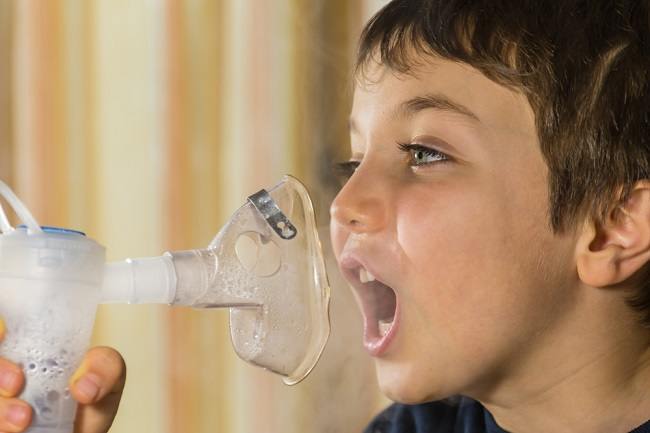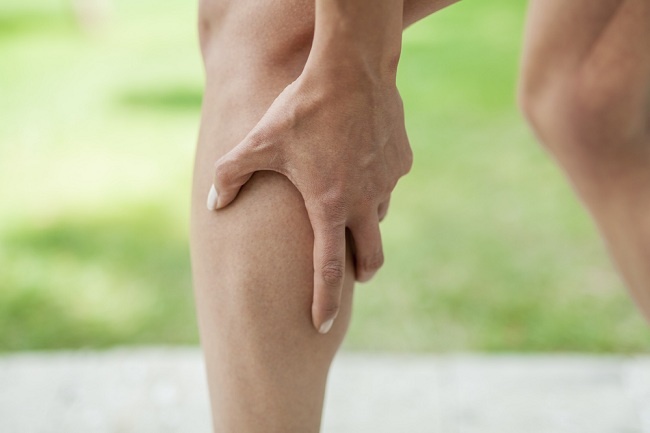heart valve surgery is a surgical procedure performed with the aim of repairing or replacing a damaged heart valve.Heart valves must be repaired if they have abnormalities that prevent them from functioning properly. Conditions that can cause heart valve dysfunction are stiffness (stenosis) or leakage (regurgitation).

The heart has 4 valves that function to regulate blood flow when the organ is pumping blood, and serves as a heart chamber divider. Among others are:
- Tricuspid valve. The tricuspid valve is a valve that forms the boundary between the right atrium and the right ventricle.
- Mitral valve. The mitral valve is the valve that forms the boundary between the left atrium and the left ventricle of the heart.
- Pulmonary valve. The pulmonary valve or pulmonary valve is a valve that regulates the flow of blood from the right ventricle to the pulmonary arteries.
- Aortic valve. The aortic valve is a valve that regulates the flow of blood from the left ventricle to the aorta, and continues throughout the body.
Heart valve disease is caused by the heart valves not closing or opening completely, so that the blood flow to the heart is disrupted. In heart valve surgery, the abnormal valve can be repaired or replaced. After this surgery, the patient needs to be hospitalized.
Heart Valve Surgery Technique
Heart valve surgery is usually done with 2 techniques, namely repairing the abnormal heart valve or replacing it. Heart valve repair is done in two ways, namely closing the valve that has a leak, or repairing and widening the opening of the valve that is narrowed or stiff. One method that can be used to treat heart valve leaks is annuloplasty, namely strengthening the heart valve muscles and closing the leak by using the heart valve ring. Meanwhile, to widen the opening of the heart valves, techniques can be used valvuloplasty, namely widening the valve opening with the help of a special balloon.
If the heart valve abnormality cannot be corrected by correcting the leak or widening the opening, the doctor may recommend that the patient undergo heart valve replacement. In this procedure, the abnormal heart valve is replaced with a new one. The new heart valve to be installed can be a plastic or metal prosthetic valve, or it can be a biological valve taken from human or animal tissue.
Indications for heart valve surgery
Patients will be recommended to undergo heart valve surgery if they have heart valve abnormalities that cause symptoms, such as:
- Chest pain.
- Heart beat.
- Hard to breathe.
- Tired quickly.
- Blue lips and fingertips (cyanosis).
- Edema, which is swelling of the legs or abdomen due to fluid buildup.
- Drastic weight gain due to fluid buildup.
If there are these symptoms, the doctor will examine the patient's general health condition and examine the patient's heart condition, to find abnormalities in the heart valves and determine whether or not heart valve surgery is necessary.
Heart Valve Surgery Warning
Heart valve surgery is a fairly complicated medical procedure. There are several conditions that need to be watched out for before undergoing heart valve surgery, because they are feared to cause complications. These conditions include:
- Recently had a heart attack.
- Suffer from cardiomyopathy.
- There is a lump or blood clot in the heart.
- Have severe pulmonary hypertension in the lungs.
- Experiencing weakness of the left ventricular heart muscle which causes the volume of blood pumped to decrease.
- Suffering from end-stage renal failure.
Heart Valve Surgery Preparation
Before undergoing heart valve surgery, the doctor will explain to the patient and his family the details of the surgical procedure along with the side effects and preparations that will be undertaken. Patients will be asked to be accompanied by their families, starting from before surgery to undergoing recovery through hospitalization. The patient's family will also be given direction by the doctor regarding the postoperative recovery process, along with steps to assist the patient's recovery.
The doctor will perform a general medical examination of the patient before performing heart valve surgery. In addition, the patient will undergo a blood test to see the ability of the blood to clot. If the patient is pregnant or planning to become pregnant, has an allergy to latex, anesthetics, or other medicines that will be used during the operation, he should inform his doctor. Likewise, if the patient has a device attached to the heart, such as a pacemaker.
The patient will be asked to fast for 8 hours before undergoing surgery, usually starting at midnight if the operation is performed in the morning. The patient will also be asked to stop smoking before the operation. If the patient is taking blood-thinning drugs, such as aspirin, they will be asked to stop taking the drug temporarily.
Procedure OperationHeart valve
In the preoperative stage, the patient will be asked to change his clothes first and wear special surgical clothes. Patients will also be asked to remove their jewelry, both metal and non-metallic. The patient also has to urinate before the operation. To collect the urine that comes out during surgery, the patient will be fitted with a catheter.
The heart valve surgery procedure will begin with making a skin incision in the chest area. A skin incision is made from the bottom of the neck to the chest. If the patient's chest has thick hair, the hair will be shaved before the operation. The patient will undergo heart valve surgery in an unconscious state due to receiving general anesthesia. After the patient is given anesthesia, the doctor will place a breathing apparatus and a transesophageal echocardiogram (TEE) through the esophagus to monitor the condition of the heart valves during surgery.
After the incision has been made, the doctor will then split the patient's breastbone so they can access the heart from the outside. The patient will be given medication to stop the heart, then the patient's body will be connected to a heart-lung machine.heart lung machine) to keep blood flowing, during the operation.
The doctor will then perform heart valve repair. Methods of heart valve repair that doctors generally do include:
- Close the hole that forms in the heart valve.
- Remove the tissue that causes the heart valves to not close completely.
- Reconnecting separated or incompletely formed heart valves.
- Separating fused valves.
- Strengthens the tissue around the heart valves.
- Replace the muscle tissue that strengthens the heart valves.
However, if the heart valve cannot be repaired, the doctor will perform a heart valve replacement. To perform a heart valve replacement, doctors don't just make an incision in the skin and open the breastbone. The doctor will also make an incision in the large artery (aorta), for access to replace the heart valve. After the aortic incision is made, the doctor will remove the damaged heart valve and replace it with a new valve. Once attached, the doctor will then close the aortic incision that has been made.
When the heart valve replacement or repair procedure is complete, the doctor will reactivate the patient's heart with a cardiac shock device. Once the heart is beating again, the doctor can place a pacemaker during the patient's recovery period to keep the heart rate normal. The breastbone that is opened will be closed again with special bone sutures so that it can be re-united. The skin incision is also closed with regular suture and a sterile bandage is applied to prevent infection. The patient will then be taken to the intensive care unit for recovery at the hospital.
After Heart Valve Surgery
The patient will undergo postoperative care and recovery in the ICU for several days. Generally, the duration of stay in the hospital that the patient will undergo is about 5-7 days before being allowed to go home and outpatient. During treatment in the ICU, the patient's condition will be monitored by doctors and officers through monitoring:
- Blood pressure
- Oxygen levels in the blood
- Respiratory rate
- Electrocardiography
During the hospitalization period, the patient is still fitted with a breathing apparatus to maintain the patient's breathing rate, especially during the initial period of hospitalization after recently undergoing surgery. A breathing apparatus is installed to maintain the respiratory rate while the patient is still feeling the effects of the anesthetic. If the anesthetic effect has diminished or disappeared, the doctor can remove the breathing apparatus and other staff will help the patient to practice breathing so that the patient avoids pneumonia.
The patient may feel pain in the operating area due to the incision and opening of the sternum. To relieve the pain, the patient will be given pain medication as needed. The patient may also feel discomfort when breathing when the breathing apparatus is removed, but this is only temporary. At the beginning of the recovery period the patient will find it difficult to eat and drink, so the patient's nutritional intake is carried out through an IV. After the patient is comfortable to swallow, the doctor will arrange the food that can be given to the patient, ranging from soft to solid food if the patient is able to eat.
If the patient has recovered, the patient will be allowed to go home by the doctor to be picked up by the family. During the early outpatient recovery period, patients are not allowed to do strenuous physical activity and drive vehicles. The surgical area must be kept dry and clean. Patients will need family assistance to carry out daily activities during the outpatient period. The doctor will schedule a patient control schedule for several weeks postoperatively to monitor the patient's recovery process. Patients will also be asked to quit smoking to speed up wound healing.
Depending on the type of valve used in valve replacement surgery, especially if a prosthetic valve is used, the patient will be advised to take blood thinning medications for life to prevent the formation of blood clots in the artificial valve. When blood clots form, there is a risk of heart attack and stroke. The recommended blood thinner is warfarin.
Risks of Heart Valve Surgery
Heart valve surgery is quite safe to undergo. So far, it is known that the success rate of heart valve surgery is around 98%. However, keep in mind that heart valve surgery is a medical procedure that also has side effects. Side effects that can be experienced by patients, including:
- Bleeding.
- Infection.
- Blood clotting.
- strokes.
- Heart valve disorders that have recently undergone repair or replacement.
- Heart attack.
- Irregular heartbeat (arrhythmia).
- Pancreatitis.
- Pneumonia.
- Respiratory disorders.
- Death.
To be aware of the occurrence of infection, patients and families should pay attention to the following symptoms:
- Fever.
- Shivering.
- It's hard to breathe.
- Pain in the operating area.
- Redness, swelling, bleeding, and discharge at the surgery site.
- Nausea and vomiting.
- The heart rate increases or becomes irregular.
If symptoms of infection appear, the patient or family needs to immediately contact a doctor so that they can be treated.









